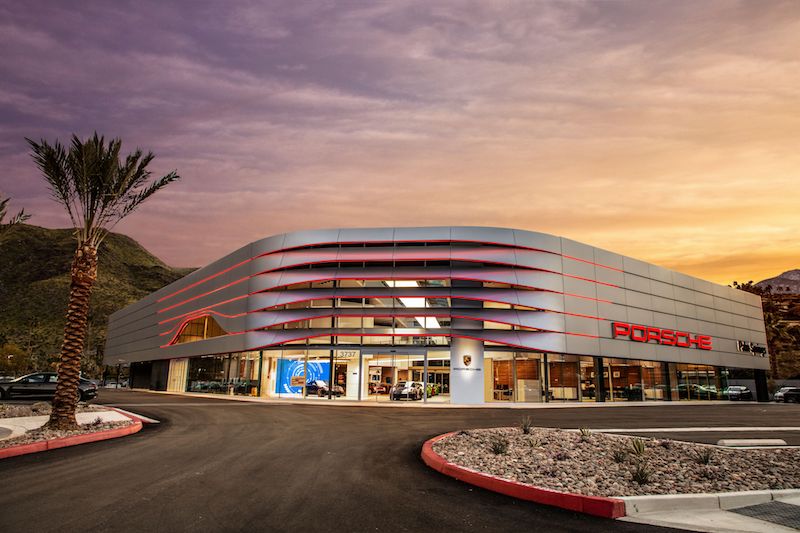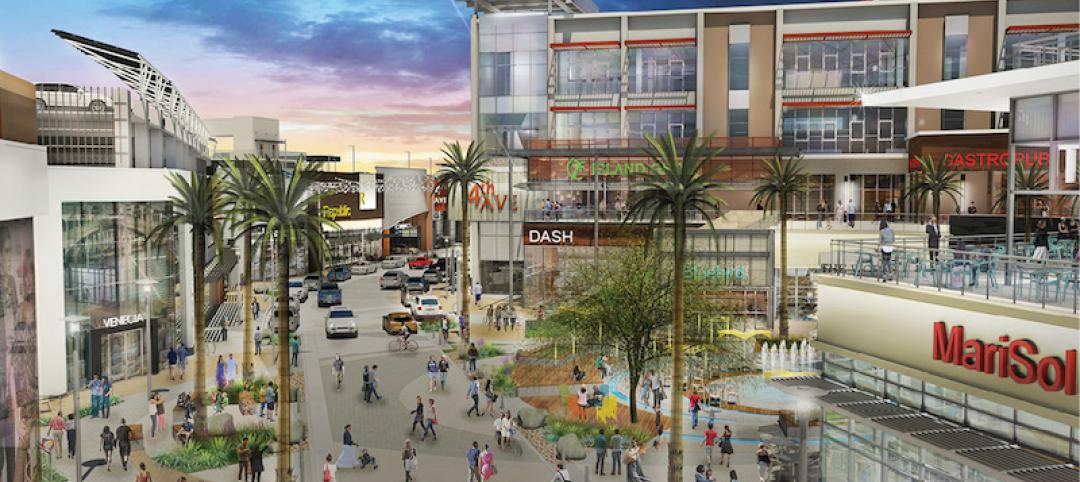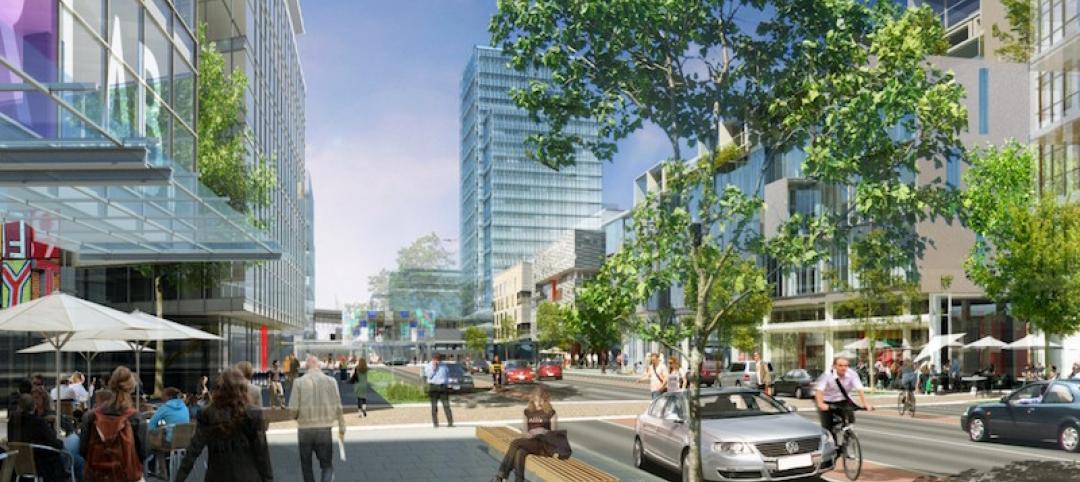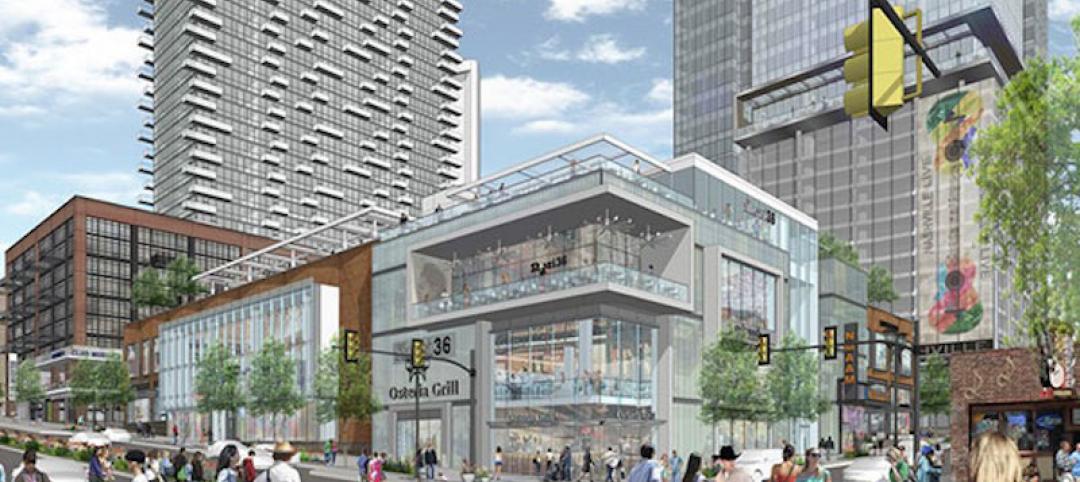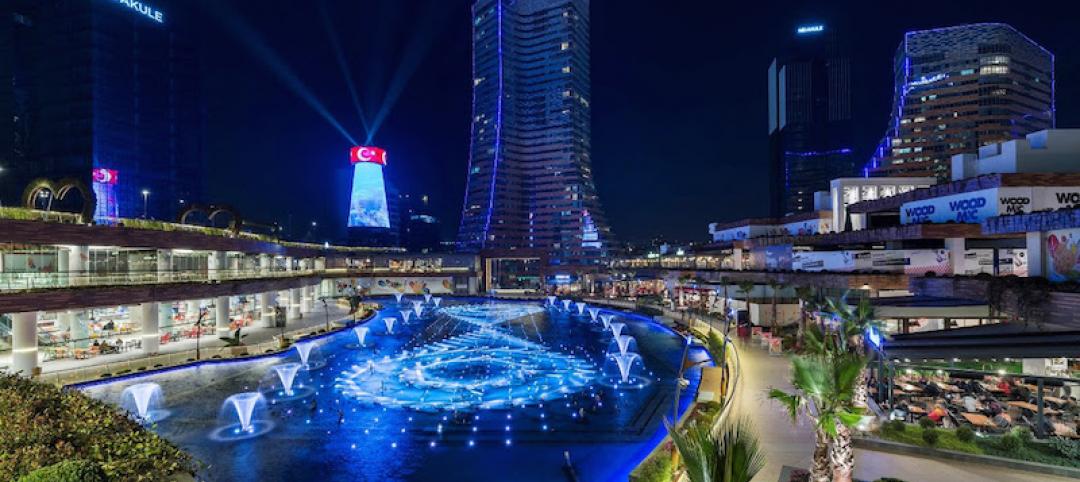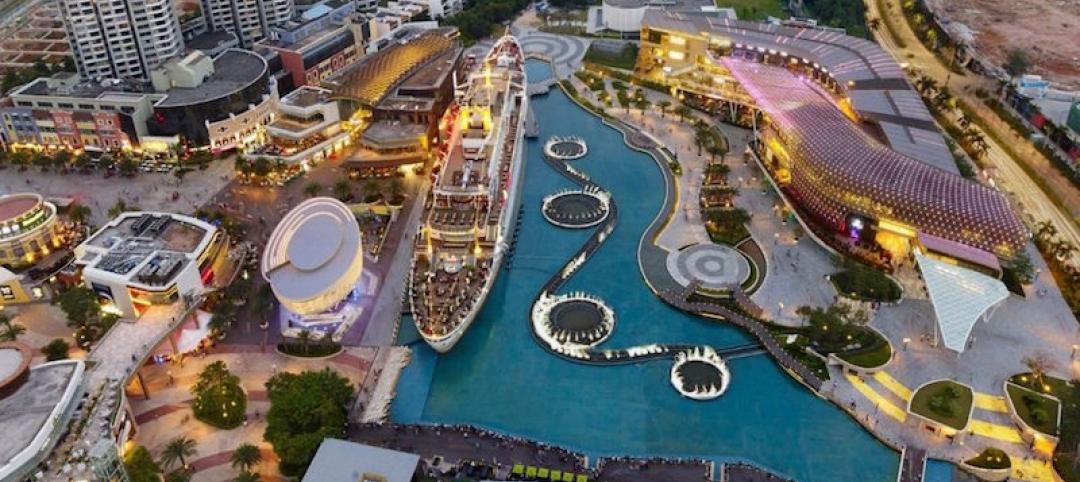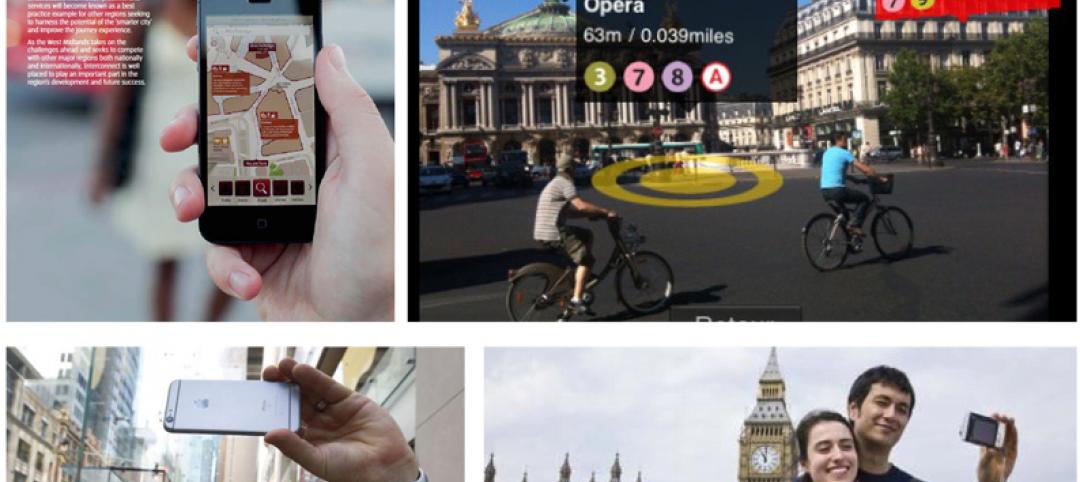Described as the first-of-its-kind, Porsche Palm Springs was designed to provide customers with architectural and tech-immersive elements that offer an exclusive Porsche experience.
Sitting on a 2.7-acre lot, the 45,000-sf facility will offer 30% to 40% more inventory than the old dealership. The LEED-certified building uses solar power and is will service and recharge the new Porsche Taycan, the brand’s first all-electric vehicle.
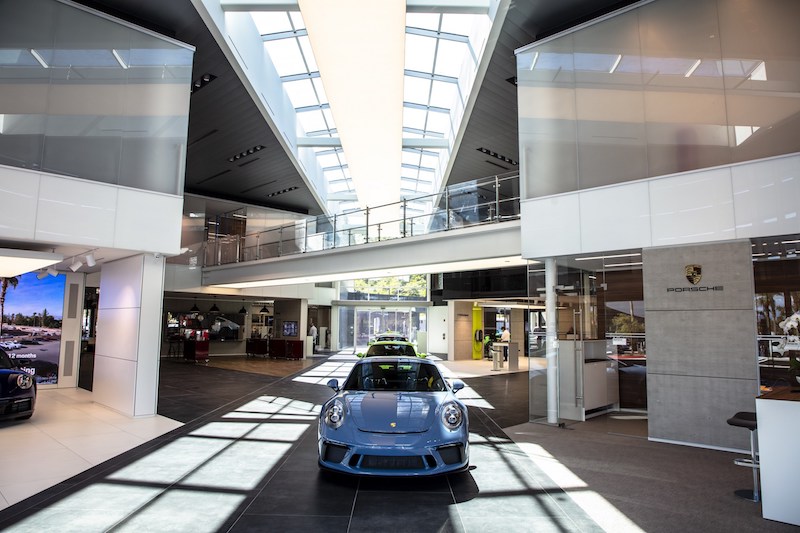
See Also: Porsche Design Tower is, unsurprisingly, a car lover’s dream
The showroom was designed with distinctive environments to reflect each model offering such as the 911, Cayman, and Cayenne. Customers enter the facility and follow a walkable road that leads them through the building to the distinct vehicle environments. The environments create experiences via audio, visual (Porsche Palm Springs includes 12 digital screens, two of which measure 16’x9’), and virtual reality elements (VR allows customers to virtually experience their own car configuration before purchase), and are easily adaptable. A walkable bridge on the second floor mimics one found in Stuttgart, Germany where Porsche vehicles sit on a moving conveyor belt that transfers them to the next stage of assembly.
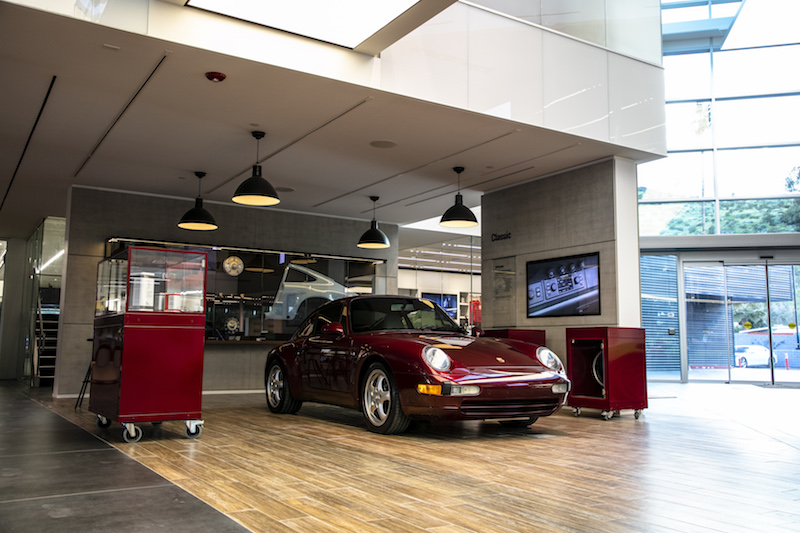
The showroom includes the Porscheplatz social space, an area that offers various seating arrangements, a café, and a Kids Corner. The second floor features Werk 1, a lounge that can be used to host events. The expanded service department comprises 16 service bays, two electric bays, and indoor hand wash bays. Visitors are able to look into the service workshop via a large window while waiting.
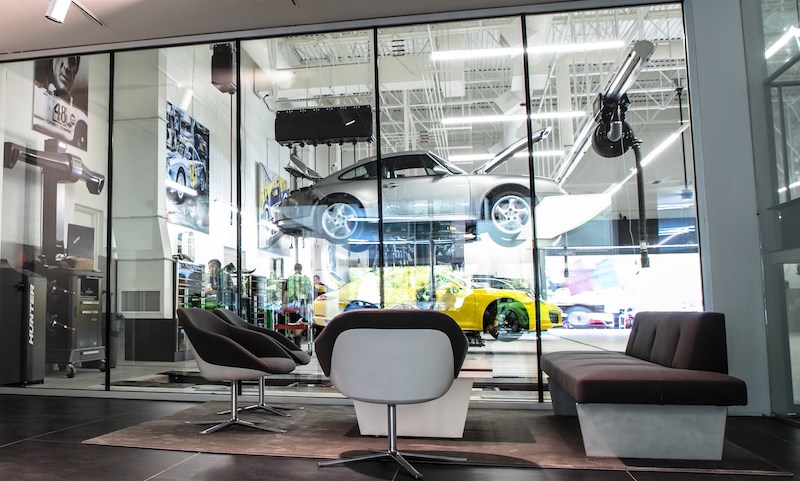
Porsche Palm Springs marks the prototype for Porsche’s new corporate architecture philosophy. The concept, dubbed Destination Porsche, looks to turn the dealership into a central gathering place for the Porsche community. The final concept will follow by mid-2020 with two dealerships currently underway, one in Dortmund Germany and one in Hangzhou, China.
The Palm Springs showroom is the result of a partnership between Porsche and indiGO Auto Group, a luxury automotive dealer with 15 franchised dealerships across five U.S. markets. Whitfield Associates, Inc. designed the project.
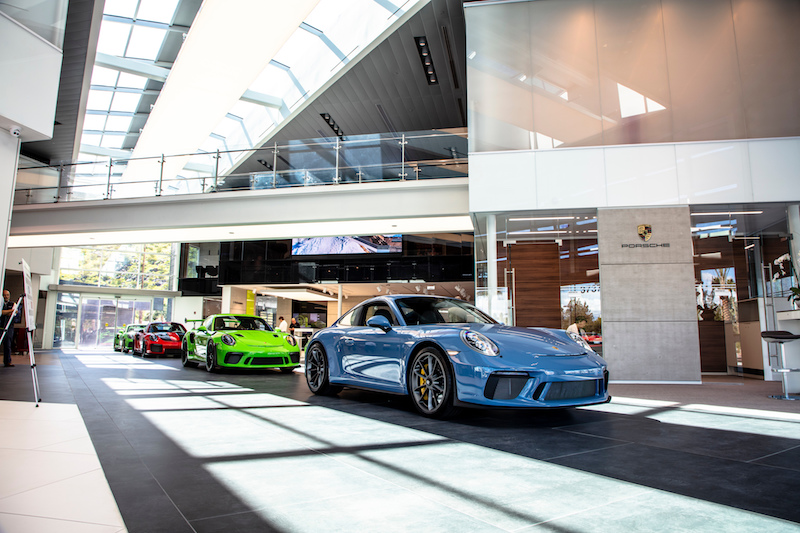
Related Stories
Mixed-Use | Apr 7, 2017
North Hollywood mixed-use development NoHo West begins construction
The development is expected to open in 2018.
Urban Planning | Mar 31, 2017
4 important things to consider when designing streets for people, not just cars
For the most part what you see is streets that have been designed with the car in mind—at a large scale for a fast speed.
Retail Centers | Mar 23, 2017
The retail renaissance part I: How architecture will shape the future of shopping
The retail sector is charting unfamiliar territory as web sales and evolving tastes force a paradigm shift. In our Retail Renaissance blog series, architects, interior designers, planners and engineers from different GS&P markets will consider the impact of retail trends and discuss how clients and developers can successfully navigate this new age of shopping.
Retail Centers | Mar 21, 2017
A giant ‘show pool’ is the highlight of a new food- and entertainment-centric mall in Turkey's largest metro
WaterGarden Istanbul hopes to attract 15 million visitors a year.
Retail Centers | Mar 9, 2017
When everyone shops online, what happens to mixed-use retail?
NBBJ’s David Yuan explains how changing retail trends are creating new opportunities for urban experiences and public space.
Retail Centers | Mar 7, 2017
Five facets of successful retail that further social connection
What’s driving experiential retail in 2017 and beyond?
Retail Centers | Jan 24, 2017
Sensational shopping: Retail and the emotional connection
CallisonRTKL's Bret Wiggins discusses how to design the retail environment in a way that taps into the shopper psyche.
Retail Centers | Dec 23, 2016
Wayfinding trends: Modern digital signage caters to personal tastes and profiles of shoppers
Applications like Bluetooth-driven Beacon systems and cellular Wi-Fi systems can now be used to help people navigate space in a more profound way, writes CallisonRTKL’s Cody Clark.
Architects | Nov 20, 2016
D.C.’s first distillery-eatery taps into a growing trend
The stylish location targets customers craving craft spirits and late-night dining.
Adaptive Reuse | Nov 7, 2016
From fuel to food: adaptive reuse converts a closed gas station in Princeton, N.J., to a Nomad pizza
The original building dates back to the Modernist 1930s.


